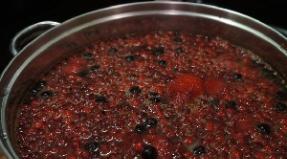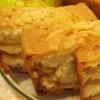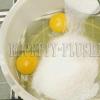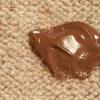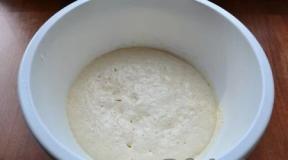Corn starch - benefits and harms to the body. Corn starch in cosmetology, nutrition, traditional medicine: benefits and recommendations
Of all starches, corn is the most accessible and cheapest for many countries in the world. It does not form as viscous solutions as potato solutions, but they do not become cloudy after thickening. The addition of corn starch has no effect on the chemical composition and organoleptic properties of foods and dishes, which is widely used in cooking.
Product history and geography
Corn as a valuable agricultural crop, called maize, has been cultivated by the indigenous people of the American continent since ancient times. They used the fruits of the plant for food, and built huts from the stalks. Maize, brought to Europe by Columbus in the 15th century, gained wider application; they began to make vegetable oil, alcohol, glucose and starch from it. The Russians got acquainted with this culture after the conquest of Crimea in the Russian-Turkish war of 1768-1774, endowing it with a modern name derived from the Turkish word "kokoroz", which means "tall plant".As a raw material for starch production, corn began to be used in large quantities only since the 19th century. Starch production, which originated a century earlier, mainly worked with wheat and potatoes, and the resulting products were more often used in the textile industry and for household needs than in cooking. Research by chemists on the conversion of corn starch into molasses and glucose contributed to its widespread worldwide distribution as a food product that retains its value to this day.
Types and varieties
Corn starch belongs to the group of polysaccharides - high molecular weight carbohydrates formed in fruits, tubers, bulbs, berries, stems and leaves of many plants. Together with potato, it is one of the main products of starch production, although it is possible to use other plants as raw materials ( wheat, cassava, breadfruit, etc.). Unlike root ( tuberous) types of corn starch, referred to as cereals, requires a higher temperature for gelatinization and solidifies only when cooled.For the manufacture of starch, specially bred starchy, less often waxy varieties of corn and their high-yielding hybrids are used. The most popular varieties are:
"Dokuchaevsky-4МВ",
Krasnodarskiy-303TV,
Orbit-M.
In industry, corn starch is produced in two forms:
1) normal,
2) modified.
The difference between the latter lies in the special treatment of starch with acids, enzymes or alkalis for better assimilation. This is done without the help of genetics, so the product does not belong to genetically modified ( GMO). In terms of purity, moisture content and a number of other indicators, both types of corn starch can be of the highest grade or 1st.
Beneficial features
The value of corn starch is due to its chemical composition, which includes fats, carbohydrates, saturated fatty and organic acids, ash and dietary fiber. The product also contains mineral compounds of calcium, sodium, potassium, magnesium, phosphorus and vitamins E, PP, group B. The calorie content of starch from corn is higher than a similar product from potatoes and is 343 kcal per 100 g. its gluten composition allows the use of starch in the diet and as a substitute for flour.Eating foods with corn starch contributes to the formation of muscle mass, the elimination of toxins and toxins from the body, and a decrease in blood cholesterol levels. The ability of this product to burn fat has also been noted. True, this applies only to subcutaneous fatty tissue and recently eaten food.
Taste qualities
Like all other starches, corn starches have a mild taste and smell, cooked products with it can have a slight taste and aroma of corn kernels, and some of its varieties are specially produced tasteless. This is especially true for sauces, in which the addition of such starch instead of flour eliminates the characteristic flour aftertaste. The paste formed during the cooking process has a low viscosity in comparison with potato starch, but it is better able to retain its properties during further processing and storage.Cooking applications
The main purpose of cornstarch in cooking is thickener... It is heated and cooled in a solution with water, which makes the mixture viscous and the cooked dishes thicker. The effect of corn starch is somewhat weaker than that of potato, but stronger than that of wheat flour.Due to the softer gluten, dishes with it are especially tender. Most often, this starch is used:
as a thickener in the preparation of jelly, mousse, pudding, sauces and some soups;
as part of pie fillings;
to give plasticity to the biscuit dough;
as a molding material in the manufacture of soft types of sweets;
in bakery to improve the taste and extend the shelf life of products;
as part of meat and dairy products to absorb moisture.
Combining well with flour, sugar and fruit, cornstarch makes baked goods ( bread, muffins, cookies, waffles, biscuits) is particularly crumbly and crispy. Sauces and soups with it are thicker than with wheat flour, and not everyone is deprived of its pleasant aftertaste. Creams, yoghurts, desserts and jelly with cornstarch are distinguished by their delicate texture and transparency.
September 15, 2018
There are probably many lovers of boiled or canned sweet corn among us. Corn starch is produced from dried grains using a special technology. The benefits and harms of such a product are of interest to many ordinary people, since starch is used not only in the food industry, but also in alternative medicine and cosmetology.
The production of corn starch takes place according to a specific technology. Embryos are removed from the seeds of the culture, which are softened to obtain the so-called milk. Then it is dried and crushed.
In the form of a white powder with a viscous consistency, we are used to buying cornstarch. The benefits and harms for children and adults of such a by-product have recently attracted unprecedented interest. After all, starch is used not only as a thickening agent for the preparation of sauces or fruit and berry jelly. Today, corn starch has gained tremendous popularity in the cosmetic field, and folk healers have paid close attention to it.
Why is corn starch so prized? The benefits and harms to the body of this offal are directly related to the chemical composition, and it can be safely called multifaceted.
Component composition:
- ash;
- filtered water;
- potassium;
- magnesium;
- vitamin B4;
- calcium;
- ferrum;
- phosphorus;
- manganese;
- sodium;
- essential amino acids;
- omega-6;
- mono- and polyunsaturated acids.
As you can see, the composition of a product such as cornstarch is quite rich and varied. As for the nutritional value, it is relatively high. 100 g of starch contains about 382 kilocalories. True, no one eats by-product in such a quantity. By adding literally a couple of spoons to the sauce or jelly, the calorie content will be much lower and in no way affect body weight.
The benefits and harms of cornstarch for humans

Not only in its pure form, cornstarch can be eaten. This powder is added to various foods. Most often, corn offal is added to the food basket of people with diabetes.
The active ingredients contained in corn powder have a beneficial effect on the human body as a whole. In addition, starch helps control blood sugar levels as well as insulin requirements.
Beneficial features:
- prevention of infectious diseases and inflammatory processes;
- strengthening the immune system;
- promoting muscle building;
- sedative effect on the body;
- protection of nerve cells;
- fight against depression.
Traditional healers have noted for themselves the healing properties of corn starch. On its basis, many miraculous remedies are prepared, which are used in the treatment of ailments of the organs of the reproductive, urinary, cardiovascular systems.
Let's turn to the component composition again. Cornstarch is fortified with iron. Accordingly, its use contributes to an increase in hemoglobin levels, the prevention of anemia and anemia.
On a note! Starch is made from the germ of corn kernels and has a beneficial effect on the functioning of the digestive tract. In this regard, such a by-product can be added to diet meals.
- elimination of accumulated toxins and toxins from the body;
- increased appetite;
- promoting weight loss;
- lowering harmful cholesterol levels;
- improved blood clotting;
- stabilization of the state of blood vessels;
- treatment of dermatological ailments.
Any product, like a medal, has two sides. Cornstarch is no exception. If you buy a low-quality by-product that was made from the grains of a crop treated with pesticides, there will certainly be no benefit from using such starch.
List of contraindications:

- obesity of any degree;
- an increased level of blood clotting;
- thrombophlebitis;
- gastritis;
- dysfunction of the digestive tract;
- heartburn.
As practice shows, with individual intolerance, corn starch can cause an allergic reaction. In some cases, a person develops symptoms of bronchial asthma.
Piggy bank of recipes
Today, corn starch is very popular with traditional healers. On its basis, means are made, the action of which is aimed at combating various ailments and pathological conditions. Let's consider the most popular recipes.
Recipe number 1
Due to its unique composition, corn starch has a beneficial effect on the functioning of the gastrointestinal tract. It can be used to treat diarrhea.
Ingredients:
- corn starch - 1 table. spoon;
- iodine - a few drops;
- filtered water - 100 ml.
Preparation and application:
- Bring the filtered water to a boil.
- Add corn starch to boiling water, stir well until the offal is completely dissolved.
- Add a few drops of iodine and use it in pure form. As a rule, one serving of such a drink is enough to eliminate unpleasant symptoms.
Recipe number 2

Alternative medicine advocates use cornstarch topically as a remedy for bruises and bruises. Literally a couple of tablespoons of this offal are mixed with water to get a mushy consistency. The prepared agent is applied to the sore spot and left to dry completely. During the day, the procedure should be repeated every three hours.
For almost 10 thousand years, much has become known about the properties of corn. Almost all the beneficial properties of this product have been disclosed. Today, corn is used to make flour and starch. These two components are widely used not only in cooking, but also in folk medicine. However, clinical trials and numerous studies have shown that cornstarch can harm our body. What is it? First, you need to figure out what kind of product it is.
What is corn starch
Many people confuse cornmeal and starch. Despite the similar composition and consistency, the two products are completely different. The main differences lie in the way they are obtained and in how and where they can be used. So, corn flour is produced by grinding grains. As for starch, it is obtained in a different way. To begin with, the grains are soaked in dilute sulfuric acid and only after that they are crushed to isolate the germ.
Ready-made corn starch, the benefits and harms of which are determined by its composition, does not contain insoluble proteins, fiber, fats. This product swells very strongly in cold water. In cooking, it can be replaced with flour.

Corn starch composition
To understand what benefit or harm this product can cause, you need to understand its composition. Corn starch contains saturated and unsaturated fatty acids, dietary fiber, vitamin PP, phosphorus, potassium, sodium, magnesium, calcium and other trace elements. Despite the high calorie content, this product is classified as dietary.
Benefits of cornstarch
According to official medicine and traditional healers, corn starch brings great benefits to the human body. For example, patients suffering from diabetes mellitus, with the help of this component, can significantly diversify their diet. Cornstarch contains a lot of carbohydrates, which take longer to break down. As a result, sugar is not released as quickly. Naturally, this is only an advantage. The use of this product allows you to avoid sharp spikes in blood sugar levels. In addition, this allows you to keep the indicator in a stable state.
Corn starch for various ailments
Cornstarch brings significant benefits to those who suffer from various cardiovascular ailments, anemia and hypertension. Such a product is able not only to improve the general condition of blood vessels, but also to increase their elasticity, and normalize blood clotting. In addition, corn starch has a positive effect on the body of those people who suffer from all kinds of ailments of the central nervous system, such as polio, epilepsy.

Another feature of the product is its choleretic properties. Very often it is used to prepare various decoctions that can eliminate inflammation of the gallbladder. Preparations based on corn starch are used in complex therapy for urolithiasis. But that's not all. The drink also helps with irritation of the bladder, frequent urination and edema.
Corn starch, the benefits and harms of which are obvious to many, is often used to prepare preparations that strengthen the immune system. In addition, food containing this particular product is in demand among athletes. After all, corn starch is able to activate all the internal forces of our body, as well as form muscle mass.
Cosmetology and corn starch
Many may be surprised, but this product is widely used in cosmetology. Corn starch and flour are often used in the manufacture of all kinds of face masks that help smooth wrinkles, rejuvenate, and slow down the aging process at the cellular level. This product is an excellent substitute for talcum powder. According to experts, powders with cornstarch have a much better effect on the skin.

Product harm
Is corn starch good for everyone? The harm of this product has already been proven. It should not be used by those people who have thrombophlebitis and increased blood clotting. Corn starch is prohibited for those who suffer from ulcers and other disorders in the digestive tract. Alas, this is not all. Specialists are especially concerned about the spread of corn, which was grown with the use of pesticides and mineral fertilizers. Recently, a genetically modified product has appeared. Its harm increases several times.
It is worth excluding corn starch and flour from their diet for those who suffer from obesity, since they contain a large amount of glucose and phospholipids. Harm is inflicted on the body and with individual intolerance. However, such cases are rare.
Cornstarch is a food additive used to thicken foods, but cornstarch has a lower thickening rate than, for example, potato starch. The addition of cornstarch makes the culinary products soft and tender. Mainly corn starch is used in confectionery and bakery.
Corn starch is synthesized by corn when exposed to light during photosynthesis. To obtain starch from corn, its grains are infused in a solution of sulfurous acid, then the corn grains are crushed, freed from the kernel and crushed. Starch is released during the grinding process. In a centrifuge, under the influence of centrifugal force, the starch is separated from the protein, then washed and dried. After drying, the cornstarch is a slightly yellow powder. Cornstarch tastes and smells like corn.
Corn starch composition:
The composition of corn starch contains vitamin PP, as well as macro and microelements such as sodium, calcium, phosphorus, magnesium, potassium.
Cornstarch varieties:
There are 3 varieties of cornstarch:
- top grade;
- first grade;
- amylo-pectin grade.
The variety of corn starch is determined by color, purity, acidity, ash content, density of dark specks on the surface of the starch. Amylo-pectin cornstarch is derived from waxy corn, which has a grain structure similar to wax.
Types of corn starch:
Cornstarch is available in both conventional and modified cornstarch. Modified corn starch is starch that has been processed in a special way during production in order to provide any other properties necessary for the preparation of any culinary products and for better digestibility by the human body. This is not a genetically modified product, it is made from natural corn, it is safe.
Modified corn starches are complete corn starches that differ from the usual in some altered property, for example, modified starch may be odorless, have some other color, and do not swell in water. The properties of modified starch can be effectively used in the preparation of various culinary products.
Benefits of cornstarch:
In small amounts, corn starch is beneficial for the human body, its benefits lie in nutritional properties that provide energy to the cells of the body and help build muscle tissue. The benefits of corn starch also lie in the fact that starch is a supplier of carbohydrates to the human body, which are vital for the normal functioning of all organs.
Thanks to enzymes, starch is broken down to water and carbon dioxide, during which energy is released, which contributes to the functioning of a living organism.
Harm of corn starch:
Cornstarch can harm someone with corn intolerance, which can lead to complications such as asthma, allergic reactions, and skin rashes. Corn is not recommended for people with gastrointestinal problems and increased blood clotting.
Is it possible to replace cornstarch with potato:
It is not recommended to replace corn starch with potato starch, as potato starch gives a much higher degree of thickening of confectionery products, as a result of which they turn out to be very thick, not as tender and soft as planned by the recipe.
On the other hand, potato starch cannot be replaced with corn starch in the preparation of jelly, since the degree of thickening of corn starch is insufficient to obtain a thick jelly. Corn starch and potato starch are starches with different properties and cannot be replaced.
In the modern world, the food industry boasts so many food additives that many are asking a reasonable question: "Why are they needed and are the products harmful to them?" Of course, I would like to eat only natural food, but in large cities this is almost impossible, or very expensive. On the other hand, additives are not as scary as they are said to be. In this article, we will look at corn starch, a food supplement obtained by breaking the protein bonds of starch extracted from corn kernels.
About quality and varieties
The technology for obtaining the substance is very simple, it is simply extracted from the raw material by soaking in an acidic solution and subsequent mechanical treatment. Its quality depends on the quality of the grain, compliance with manufacturing technology, rules and storage times.  Corn, like any other starch, must meet certain quality indicators.
Corn, like any other starch, must meet certain quality indicators.
These include:
- Lack of foreign smells and tastes. The presence of these indicates improper storage (given that the product has strongly pronounced sorbing properties, it must be stored in dry, well-ventilated rooms).
- Lack of impurities, including various grains, dust, traces of other types of product.
- The color inherent in the variety - for corn is characterized by white with a barely perceptible yellowish tinge, gray is a sign of the presence of impurities.
- The moisture content of the product, normally, should not exceed thirteen percent.
Did you know? Although we are most familiar with potato starch, tubers do not contain too much of this substance - only about 25%. Most of all starch is in cereals, and especially a lot of it in rice grains - up to 86%.
 Unlike potato, which has a division into four varieties, maize has two: the highest and the first. The difference is determined according to the following indicators:
Unlike potato, which has a division into four varieties, maize has two: the highest and the first. The difference is determined according to the following indicators:
- The maximum percentage of ash in dry matter: premium grade - 0.2; 1st grade - 0.3;
- Maximum acidity per hundred grams of dry matter: premium grade - 20; 1st grade - 25;
- The maximum proportion of protein: top grade - 0.8%; 1st grade - 1%;
- The presence of dark inclusions (per 1 dm 2 of an even layer): the highest grade - no more than three hundred; 1st grade - no more than five hundred.

Corn starch composition
Corn starch is a versatile grain product and is characterized by its low protein and ash content. It consists almost entirely of carbohydrates (84 g per 100 g of product), the proportion of proteins and fats is negligible.
Also contains healthy teeth and bones and, in small quantities, also vitamin PP.
Nutritional value and calorie content
The calorie content of the product is 330 Kcal per hundred grams. This is higher than that of starch extracted from potatoes (313 Kcal). In the ratio, these are: proteins 1%; fats 2%; carbohydrates 97%.
The product has practically no nutritional value, it is used to change the consistency and structure of food or industrial products. 
Important! Although the shelf life of the product from the date of production is two years, given its susceptibility to moisture and absorption of foreign odors, it is not recommended to buy a product that has been stored for a long time.
Why is corn starch useful?
The product has some properties that are uniquely beneficial to the body:
- Does not contain, therefore, suitable for people suffering from intolerance to this substance. It can be used, inter alia, as a flour substitute (if not abused) when.
- Reduces sugar and cholesterol levels, that is, it can be eaten even during a diet (including those prescribed for medical reasons), but again, subject to low dosages.
- It can be used as a urinary and choleretic agent.
- It has a good effect on the activity of nerve cells.
- Reduces appetite and dulls hunger.
 With these properties, it is not surprising that cornstarch is sometimes more in demand than standard potato starch.
With these properties, it is not surprising that cornstarch is sometimes more in demand than standard potato starch. Application
This substance has such remarkable properties as the absence of viscosity, and also gives the products it contains, tenderness and softness.
Thanks to this, it has found its application in cooking (for example, in the preparation of confectionery), as well as in medicine and cosmetology (mainly used to create bulk dosage forms).
Did you know? Many people remember that once the bed linen and garments were subjected to starching, but few remember why this was done. Rinsing the fabric in an aqueous suspension of starch allowed it to retain its shape for a long time, wrinkle less and not be afraid of dirt. Various stains not only stick to such fabric less, but also wash better.

In medicine
Starch (including corn starch) is used as an excipient in the following cases:
- is part of tablets to form them, facilitate swallowing and dissolve in the stomach;
- is the basis for powdered medicines;
- It is widely used in preparations intended for the treatment of skin diseases (powders, ointments).
In addition, there is an opinion that it is able to replace talc, since it is identical to it in functional properties, but does not have a negative effect on the skin.
More preferable as a baby powder. 
In cooking
It can be used as a naturally occurring thickener not only in home cooking recipes, but also in the food industry.
It is added to:- sauces;
- mousses;
- jelly;
- ketchups and mayonnaise.
Important! If using starch at home, store it in airtight glass containers, away from strong odors.

Harm and contraindications
The main harm of this product is the possibility of allergic reactions in the form of a rash (allergic dermatitis) or asthmatic symptoms (breathing problems).
Such cases are extremely rare, however, cornstarch should not be consumed by people who are allergic to corn.
You should also refrain from it in the following cases:
- for problems with the gastrointestinal tract (including gastritis, ulcers, or even heartburn);
- if you are overweight or have a tendency to be overweight (the product is calorie);
- with excessive blood clotting (it is better to exclude starch from the diet altogether).
 So, we found out that starch is a rather useful substance, widely used in medicine, cooking and even in everyday life.
So, we found out that starch is a rather useful substance, widely used in medicine, cooking and even in everyday life. Of course, nothing is perfect, and this substance has its drawbacks, however, if it is not abused, then it will not cause any special harm to the body.

